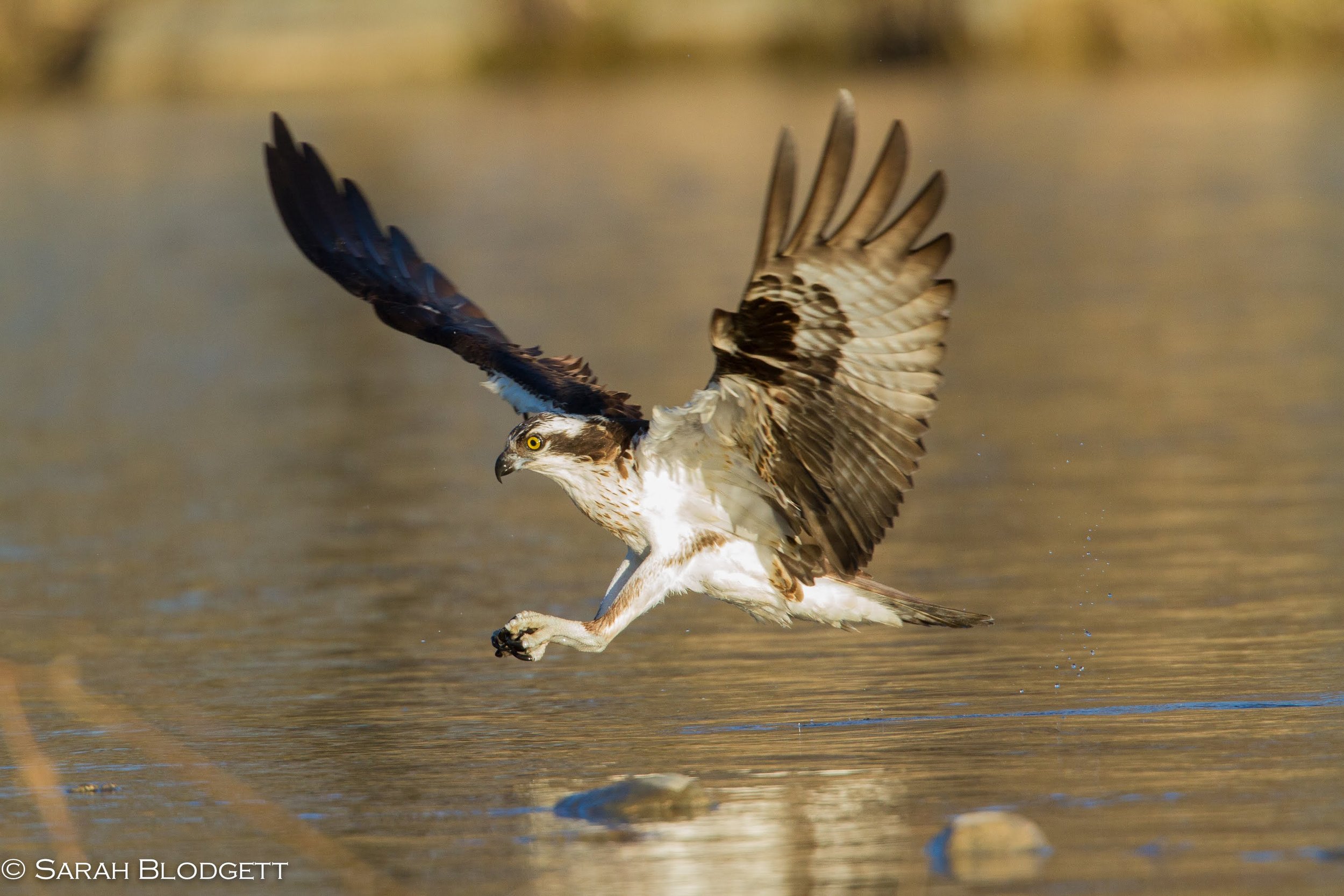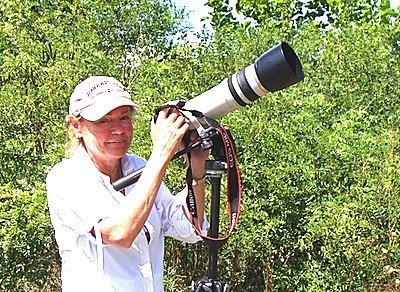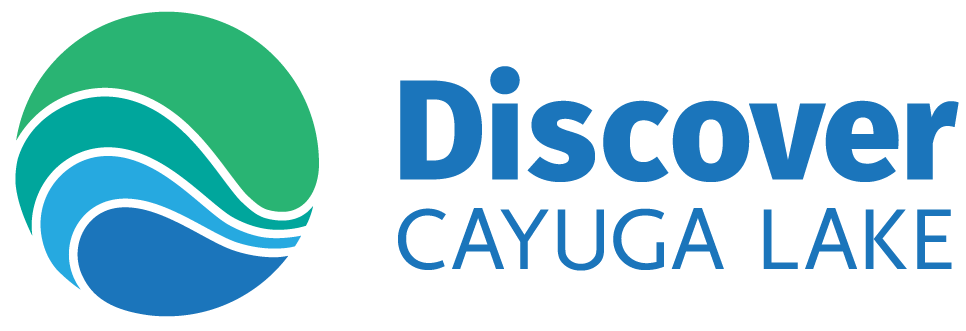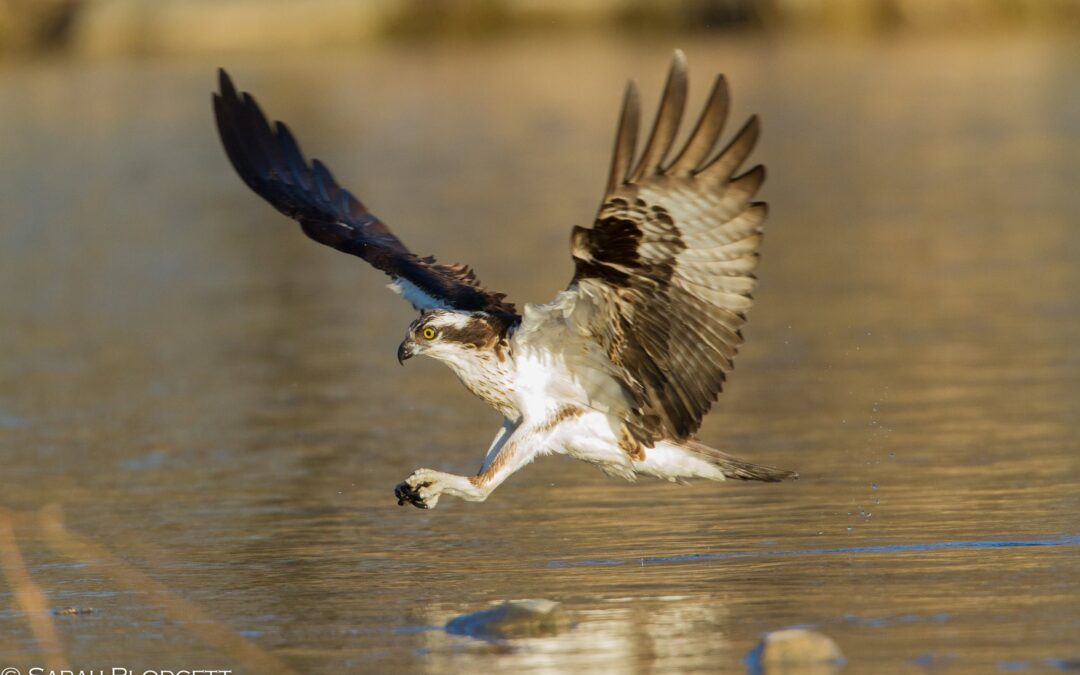Around Cayuga Lake, we know spring has arrived when the local, summer Osprey return to their nests in late March. The birds return to the same nest with the same mate each year. Since last August, Cayuga Lake’s Osprey population has spent their winter season in South America, as far South as Argentina where the climate is warmer. They fly all the way there and back every year!

Osprey diving to catch a meal of fish from the water. Courtesy of Sarah Blodgett.
There are an estimated 150 pairs of Osprey living around Cayuga Lake. Last year most pairs had 2-3 chicks in their nest. That means there could be up to 450 Osprey flying around Cayuga Lake in the near future!
Osprey have been settling around the edges of Cayuga Lake since 1990, making a significant come-back to the region after a multi-decade hiatus due to the toxic pesticide, DDT. The spraying of this pesticide was detrimental to the aquatic food chain around Cayuga Lake. Since Osprey and other birds of prey like Bald Eagles are tertiary consumers (top of the food chain) they were significantly impacted, as pesticide accumulation was especially high in the fish they relied on for food. The Osprey population became nearly extinct in the 1970’s, as their eggs were unable to receive the calcium needed to form properly, preventing Osprey from reproducing.
Discover Cayuga Lake is in the process of developing a Pollution Prevention Program as educational material for our Trout in the Classroom students. We have been examining the affects of different pollutants on our local watershed like fertilizers, trash, hazardous waste, pesticides and cleaning products. The story of Osprey around Cayuga Lake is an important reminder of how pollutants like pesticides can make their way into the water cycle and have harmful affects on the plants, animals and habitats reliant on clean water.

Osprey fledgling, photo courtesy of Rachel Hogancamp

DCL Board Member on the lookout!
But the story of the Osprey’s return is also a great reminder of what can happen when leaders and concerned citizens come together to protect the environment. Osprey and raptor protection is a direct result of environmental advocacy initiatives like the Endangered Species Act in 1978, the U.S. DDT ban in 1972, and New York Department of Environmental Conservation’s effort to install wooden platform for safe nests. With the help of local citizens, there are now hundreds of Osprey pairs nesting around Cayuga Lake, with new broods of fledglings yearly, creating an exponential population growth over the past three decades.
This spring, we can look forward to the Osprey returning to their nests and mates around Cayuga Lake. Pretty soon, these white and brown speckled birds with 4-5 foot wing-span will be soaring around the lake, diving for fish, carrying sticks to rebuild their nest and preparing for a new brood of nestlings. It’s an exciting natural event to be able to witness in our region, and a constant reminder of human’s ability to both harm and help the plants and animals all around us.
If you would like to get up-close to experience the Osprey’s return to their nests and their families, here are some great birding opportunities available to you:
-
Cayuga Lake Osprey Trail: This trail lists 62 nest sites within a 2-3 hour drive around Cayuga Lake. The self-guided trail provides information about the particular nest location, where to look for the nest, as well as any available information about the Osprey pair nesting there. It’s an immersive Osprey experience, with plenty of opportunities to stop at scenic parks, wineries, marinas and farm stands along the way.
-
Scenic Byway Birding Trail: This trail introduces novice birders to the migratory, breeding and nesting birds all around Cayuga Lake and the Finger Lakes Region. This self-guided tour is marked with a kiosk at each trail site with photographs and descriptions of the variety of birds to be seen from that location.
- Osprey Cruises: Discover Cayuga Lake’s Osprey Cruise is a great way to see an Osprey nest up-close from the boat, and to catch a glimpse of adult Ospreys soaring in the sky and occasionally diving for a fish to bring back to the nest. With binoculars on board, and educational narration about the local bird population, lake ecology and the aquatic food chain, this is an Osprey experience bird and nature lovers don’t want to miss!
-
Practice Bird Identification on your own nature walks: As a birdwatcher, you can gain your own knowledge through your unique experiences in nature while utilizing bird identification apps creating by the Cornell lab of Ornithology, Ebird and Merlin. Record bird calls, take pictures to help you identify the birds around you, or explore maps of nesting and species hotspots for a self- created birding adventure.
Happy birding this spring and we hope you’ll do your part to keep our environment clean and pollution free!

DCL Trout in the Classroom students monitoring stream health

